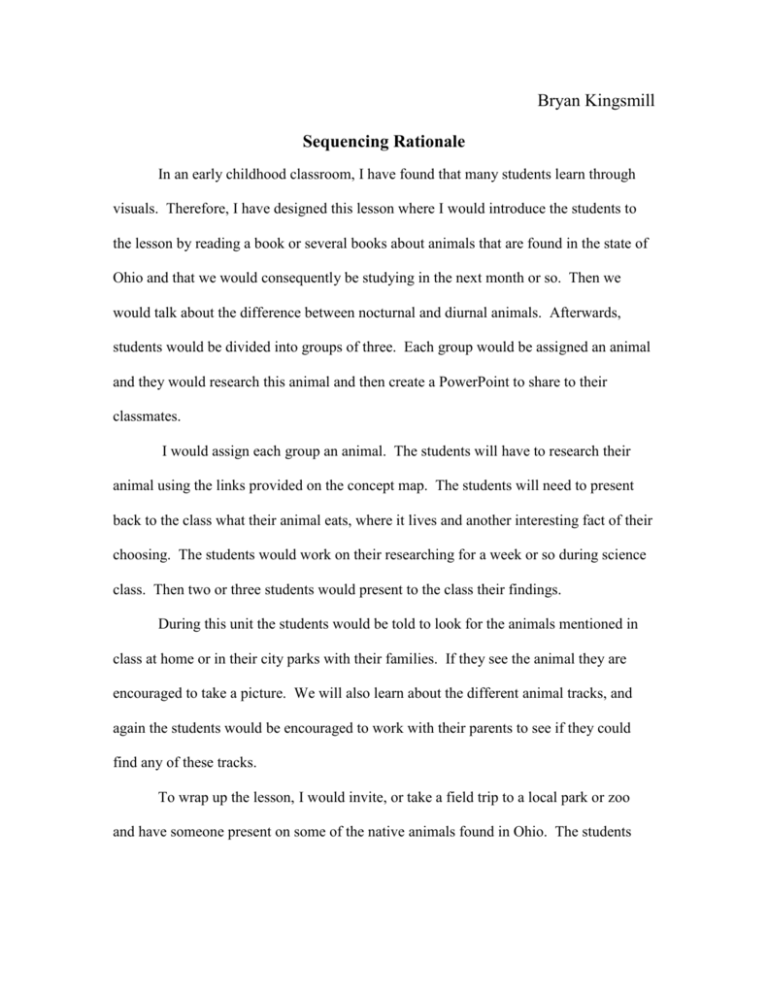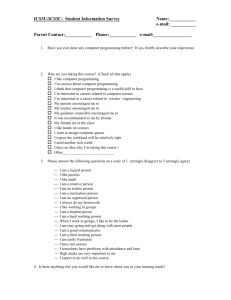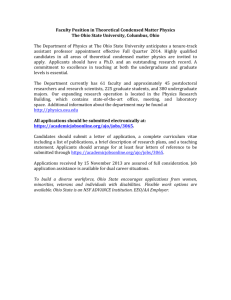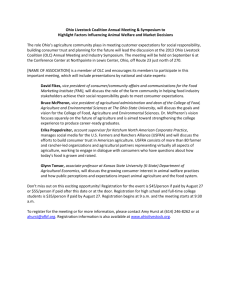Sequencing Rationale
advertisement

Bryan Kingsmill Sequencing Rationale In an early childhood classroom, I have found that many students learn through visuals. Therefore, I have designed this lesson where I would introduce the students to the lesson by reading a book or several books about animals that are found in the state of Ohio and that we would consequently be studying in the next month or so. Then we would talk about the difference between nocturnal and diurnal animals. Afterwards, students would be divided into groups of three. Each group would be assigned an animal and they would research this animal and then create a PowerPoint to share to their classmates. I would assign each group an animal. The students will have to research their animal using the links provided on the concept map. The students will need to present back to the class what their animal eats, where it lives and another interesting fact of their choosing. The students would work on their researching for a week or so during science class. Then two or three students would present to the class their findings. During this unit the students would be told to look for the animals mentioned in class at home or in their city parks with their families. If they see the animal they are encouraged to take a picture. We will also learn about the different animal tracks, and again the students would be encouraged to work with their parents to see if they could find any of these tracks. To wrap up the lesson, I would invite, or take a field trip to a local park or zoo and have someone present on some of the native animals found in Ohio. The students would be able to connect what they learned to the real life animal and see that they really do exist.











